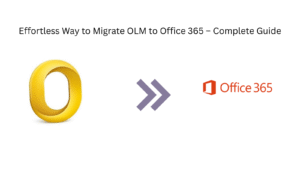
Running a manufacturing facility or working in an industrial environment comes with its own set of challenges—complex machinery, hazardous materials, and tight production deadlines. But the biggest challenge? Ensuring the health and safety of your workers. It’s not just a legal requirement; it’s a moral and business imperative.
Enter ISO 45001. This internationally recognized certification standard is all about improving workplace safety and creating a culture of proactive risk management. For manufacturers and industrial companies, this certification isn’t just about compliance—it’s about protecting the people who make your operations run smoothly and boosting your reputation in the marketplace.
In this article, we’ll break down what ISO 45001 is all about, how it helps your organization, and why pursuing this certification is one of the best decisions you can make for your business—and your workforce.
What is ISO 45001 Certification?
In simple terms, ISO 45001 is the international standard for occupational health and safety management systems (OHSMS). It sets out a framework for managing risks and opportunities to prevent work-related injuries, illnesses, and deaths. It’s designed to improve worker safety, reduce workplace risks, and create healthier, safer work environments.
The goal of ISO 45001 is to provide organizations with a systematic way of identifying and addressing risks, ensuring that employees are protected from harm. Whether you’re in construction, manufacturing, or any other industrial sector, ISO 45001 gives you the tools to build a safety-first culture where employees feel valued and protected—and where your business thrives.
But what’s so special about ISO 45001? Why should your manufacturing or industrial company consider going down this path?
Why ISO 45001 is Essential for Manufacturers and Industrial Companies
1. Protecting Your Workforce is Non-Negotiable
In any manufacturing or industrial environment, worker safety should be at the forefront of everything you do. The risk of accidents or illnesses can be high, and the consequences can be severe. From machinery malfunctions to exposure to hazardous chemicals, there are countless risks workers face daily.
ISO 45001 helps you create an effective risk management framework that not only identifies and addresses potential hazards but actively works to prevent them. Whether you’re dealing with physical safety concerns, mental health issues, or environmental hazards, this certification forces you to take a step back and systematically evaluate and improve safety practices—for the benefit of your workers and the organization as a whole.
The statistics are hard to ignore. In the manufacturing industry alone, workplace injuries cost businesses billions each year in medical expenses, lost productivity, and insurance claims. ISO 45001 aims to drastically reduce these costs by ensuring a safer, healthier environment.
2. A Boost to Your Reputation
Think about it: in today’s business world, reputation is everything. Companies that fail to take worker safety seriously can quickly find themselves in the spotlight for all the wrong reasons. A single incident can tarnish your brand, affect employee morale, and drive customers away.
However, by achieving ISO 45001 certification, you’re sending a clear message that your organization prioritizes safety. This commitment not only protects your workers but enhances your reputation in the marketplace. Clients, partners, and stakeholders are increasingly looking for companies that meet international standards, especially when it comes to health and safety.
It’s not just about ticking a box for compliance—it’s about building trust. Trust with your employees. Trust with your customers. Trust that, when they work with you, they know you take health and safety seriously.
3. Reduced Risk and Legal Liabilities
Let’s face it: if your company is not compliant with safety regulations, you’re opening yourself up to significant risks, including hefty fines, legal fees, and potential lawsuits. And that’s not even considering the long-term damage to your reputation.
ISO 45001 certification helps you minimize these risks by ensuring compliance with occupational health and safety laws and regulations. It provides a structured framework for identifying legal requirements and ensuring your operations meet or exceed those standards.
This certification isn’t just about avoiding fines—it’s about creating a culture of safety that helps your company stay ahead of potential legal issues. And with industrial sectors facing increasingly stringent regulations, staying on top of compliance is more critical than ever.
4. Improved Productivity and Employee Morale
It may seem counterintuitive, but focusing on safety actually improves productivity. Here’s the thing: when workers feel safe, they’re more engaged and more productive. They’re not worried about injuries or accidents. They know that their company cares about their well-being.
ISO 45001 helps you develop clear safety policies, implement better training programs, and create safer work environments. When workers see their employer investing in their health and safety, it boosts morale and leads to a more motivated and committed workforce. And that’s good for business.
A safer workplace also means fewer sick days, reduced turnover, and a decrease in absenteeism. All of which contribute to a more efficient and cost-effective operation.
5. Continuous Improvement and Risk Management
One of the standout features of ISO 45001 is that it’s a continuous improvement model. This isn’t a one-time certification; it’s a commitment to constantly improving safety protocols and adapting to new risks or regulations. The goal is not just to meet the minimum requirements but to strive for ongoing safety enhancements.
The standard encourages you to evaluate your risk management processes, identify weaknesses, and make adjustments where needed. Over time, this results in a safer and more efficient workplace, where employees are empowered to raise concerns and where management is always striving for improvements.
What Does It Take to Achieve ISO 45001 Certification?
Achieving ISO 45001 certification involves a structured process, but it’s absolutely worth the effort. Here’s a general overview of what the process typically looks like:
1. Conduct a Safety Audit
Before diving in, it’s essential to conduct a thorough safety audit of your current practices. This audit will identify existing risks, gaps in safety procedures, and areas where improvements are needed. It’s a critical first step in ensuring you have a clear picture of your workplace’s safety landscape.
2. Develop an OHSMS
Next, you’ll need to develop a comprehensive Occupational Health and Safety Management System (OHSMS). This system outlines your safety policies, procedures, and controls for identifying, assessing, and managing workplace risks.
3. Implement Control Measures
Once your OHSMS is in place, it’s time to implement controls to address the identified risks. These may include safety training for employees, installing safety equipment, improving machine safety features, or adjusting work processes to reduce the chance of accidents.
4. Engage Employees and Train Staff
ISO 45001 emphasizes the importance of employee involvement. It’s not enough to simply tell your workers what to do—they need to understand why safety matters and how they can contribute to it. Providing ongoing safety training and engaging employees in safety initiatives will ensure that your efforts are effective.
5. Monitor and Review
The certification process doesn’t stop once you’ve put all the necessary systems in place. Continuous monitoring and review are key to maintaining ISO 45001 certification. Regularly assessing risks, reviewing incident reports, and conducting internal audits will help you stay on top of safety and make improvements when necessary.
Key Benefits of ISO 45001 Certification for Manufacturers
Here’s a quick recap of the primary advantages ISO 45001 brings to your organization:
Better Risk Management: Identify and control safety risks before they become accidents.
Legal Compliance: Stay compliant with national and international safety regulations, avoiding fines and penalties.
Enhanced Reputation: Demonstrate your commitment to safety, building trust with employees, clients, and stakeholders.
Employee Satisfaction: Create a safer and more engaging workplace that improves morale and productivity.
Cost Savings: Reduce workplace accidents, insurance costs, and the risk of legal liabilities.
Overcoming Challenges to Achieve ISO 45001 Certification
Achieving ISO 45001 certification can be challenging, especially for companies that haven’t yet prioritized workplace safety or don’t have established risk management systems. But these challenges aren’t insurmountable.
You’ll need the support of management, adequate resources, and a dedicated safety team. It can be time-consuming, and you might face resistance to change. But the long-term benefits far outweigh the initial effort and costs.
Final Thoughts: Is ISO 45001 Right for Your Company?
For manufacturers and industrial companies, ISO 45001 certification isn’t just an optional upgrade—it’s a vital step towards a safer, more efficient, and more sustainable business. In a world where safety concerns are becoming increasingly prominent, ISO 45001 is a clear way to protect your workers, minimize risk, and enhance your organization’s reputation.
So, are you ready to make safety a priority? Achieving ISO 45001 certification could be the best move you make for your business—and the health and safety of your employees.




